Rocket anti-ship complex Vulcan P-1000
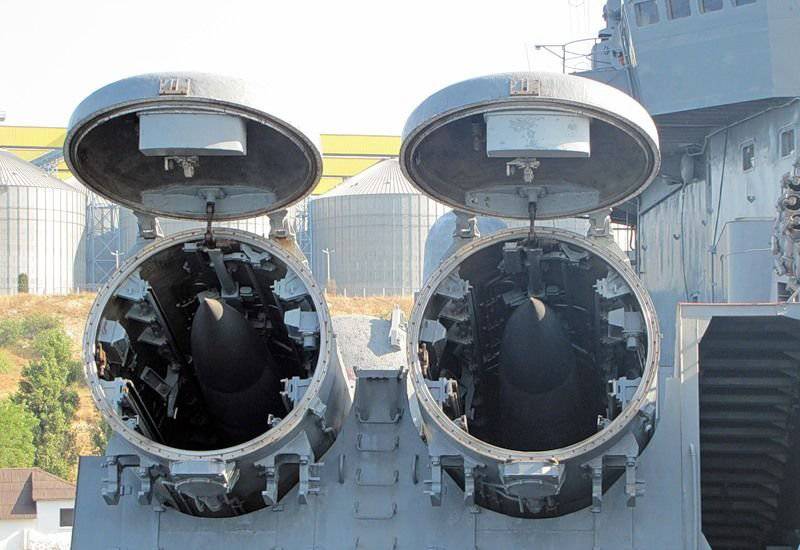
According to the decree of the Council of Ministers of the Soviet Union on 17.05.1979, the Scientific and Production Association of Mechanical Engineering begins the development of the SCRC, which is a further development of the P-500 complex. The new complex retained the starting equipment from the previous complex and received a greater range of damage due to the use of an improved starting engine in the rocket, adding fuel to the sustainer stage, reducing body armor and a number of improvements.
The beginning of the tests of the complex began 3.12.1982 of the year in 10.55 Moscow time at the test site near the village of Nenoks, Arkhangelsk region. The first launch of the rocket failed: the launching unit after testing was not separated from the rocket, with the result that the rocket began to fall apart in flight and after 8 seconds after launch, it falls. The next launch, carried out by 9.04.1983 of the year, also turns out to be unsuccessful, the rocket crashes on the 9 second of the flight. In the course of the investigation of unsuccessful launches, it was established that the cause of problems in the rocket lies in the control system. Therefore, by the third launch, which took place in June 1983, the control system is being finalized, and the rocket successfully worked along the entire flight path.
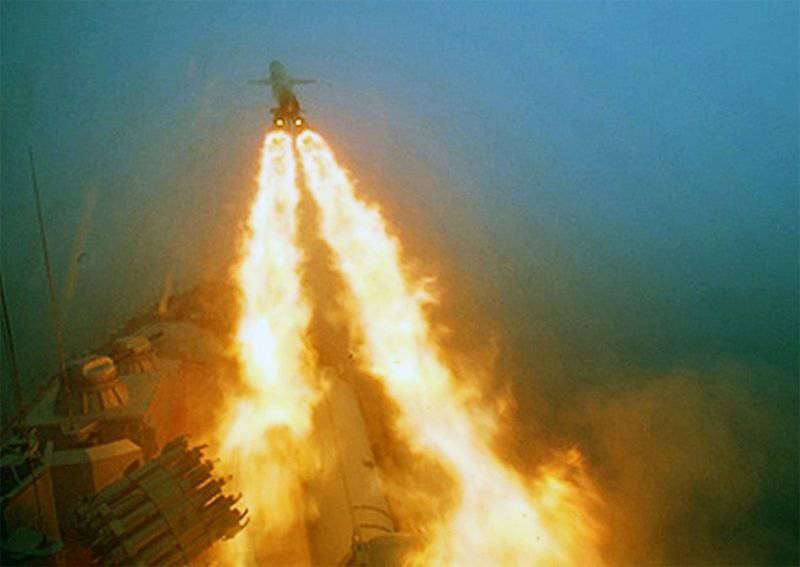
The basic tests of the Vulkan SCRK begin on the 22.12.1983 of the year on board the SSGN of the 675 project upgraded to the 675MKV project. The upgrade was to get the new SCRP P-1000. In total, four SSGNs from the 675 project were upgraded in due course. Joint tests of modernized SSGNs and newly installed P-1000 complexes begin in 1985 year. A volley was made by two missiles that successfully destroyed the established target, and this despite the fact that there was a malfunction in the pressure support system in the instrument equipment compartment and an error during the launch of the operator’s rocket. The next launch under the joint testing program carried out 8.11.1985 of the year - a volley was fired with three missiles, which, in general, was recognized as successful - two missiles successfully destroyed the established target, the third missile had a reticle radar in flight. In general, 18 missile test launches were conducted and 11 of them are considered successful.
By the end of 1985, the management system and the CPA were completed, at the end of which they signed the Joint Testing End Act, which recommends adopting the Vulcan into service with the Navy, taking into account control tests in the 1986 year. For testing, 8 rockets were allocated - salvo launch of 4 rockets and a single launch of the rest within various test programs:
- the launch of the 1 rocket was carried out on the 24.05.1986 of the year, as part of the test program for the control system of the missile complex "Basalt". Start recognized as successful;
- launch of the 2 th missile carried out 18.06.1986 of the year, as part of the noise immunity test. Start recognized as successful;
- launch of the 3 th missile carried out 19.06.1986 of the year, as part of the noise immunity test. Start recognized as successful;
- salvo launch 4-x missiles 4.07.1986 of the year, a salvo recognized as successful. Three of the four missiles were equipped with telemetry, as ground equipment at the site could not accept the data of four missiles. The fourth rocket, without telemetry, for some unknown reason, strayed from the flight path and the target did not hit.
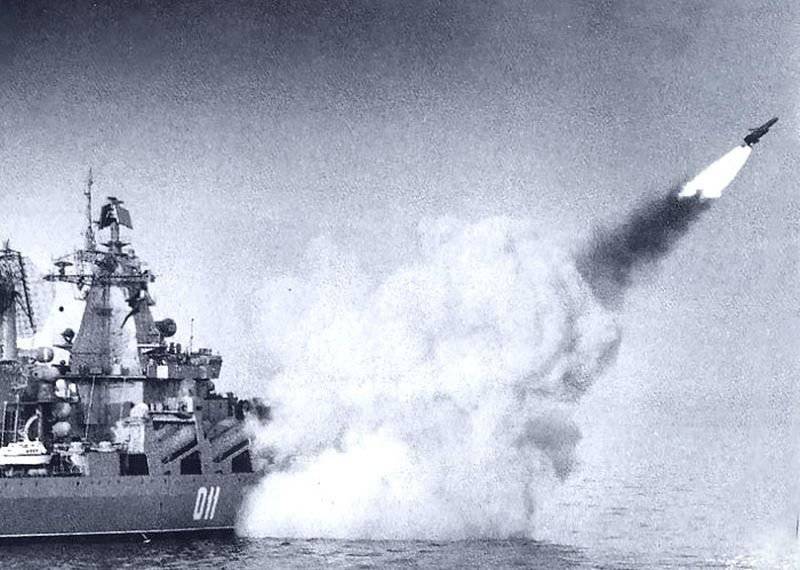
SCRC "Vulkan" adopt 18.12.1987 year. The production of missiles for the complex was engaged in the Orenburg association Strela from 1985 to 1992. The complex could be supplied in three versions - ground (coastal) with PU of type CM-49 (used during the first tests of 1982 of the year), surface with PU of type CM-248 (analogue of the complex “Basalt”), underwater type of SCRC "Basalt".
Anti-ship missile 3М-70
The design of the CRP used titanium alloys, thereby reducing the body armor. The rocket of the complex used an inertial control system with the ability to make corrections from the radar homing head, developed at the Central Research Institute Granit. The designer of the control system is designer A. Chizhov, the onboard PTA designer B. Godlinik. The autopilot was developed by the designer A. Kuchin, the onboard computer by the designer V. Nikoltsev. The selection of targets by a rocket was carried out either automatically, or using telemetry, or with the possibility of combining modes. The autopilot and BTsVM (A21 and B9) are assembled on the latest elemental base at that time, and seriously differed from similar solutions of the Bazalt complex. The designers were able to improve the noise immunity characteristics of the radar homing head, creating an improved on-board computer. The equipment of the automated control system and the CPA were built anew for the Vulkan complex and were very different from the analogous equipment of the Bazalt complex. The SSN 3М-70 can work as a rocket of the Bazalt complex when equipped with a solid-fuel accelerator from 4K-80 (P-500 Basalt).
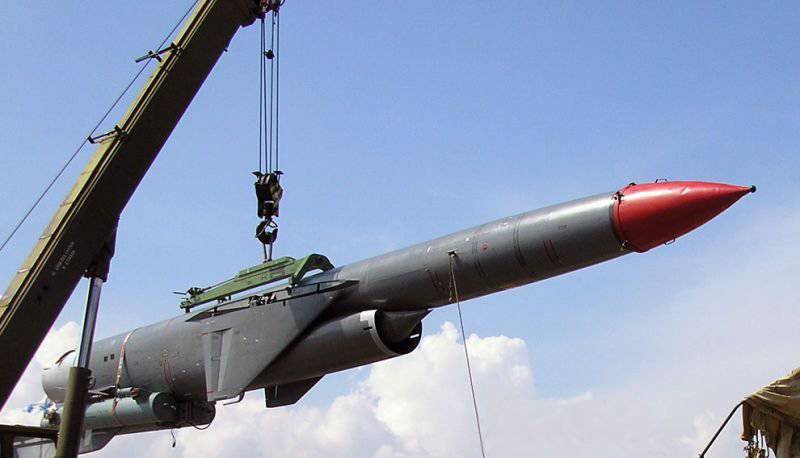
When pointing a rocket, the algorithm used to select the main target in the group of ships was used. When launching, the rocket received the coordinates of the target and passed the main part of the trajectory with the radar sighting device turned off. At the final part of the trajectory, the rocket was reduced to the target, and the reticle was automatically switched on, with the help of which the coordinates were refined and the target was captured. In this case, the onboard equipment was used to analyze the size of the targets, the position relative to the given coordinates of the target. Such an algorithm provided the missile with the capture of the largest target in the group of ships.
To overcome the enemy’s missile and air defense, the rocket was provided with anti-aircraft maneuvering algorithms at low altitudes. When launching missiles at a salvo, they were spread around the front when threatened and re-assembled in a group on the final segment of the trajectory (before the reticle was switched on). For electronic warfare, a rocket was installed at the 4B-89 “Bumblebee” active jamming station; it was developed by the Granit department of the Institute’s 25 and by the designers R.Tkachev and Yu.Romanov. The instrument compartment is completely sealed, to support the required pressure inside the compartment is equipped with a special system.
At the end of 1987 of the year, according to a decree of the Council of Ministers of the Soviet Union, work begins on the creation of Vulcan LC rockets using a laser high-precision guidance channel. This was supposed to increase the accuracy of missile hits. The on-board equipment for the new rocket was developed under the guidance of the chief designer V.Senkov. The laser channel of guidance was created at the Central Research Institute "Granit", project manager S.Sharov. The laser guidance system could recognize surface ships by geometrical parameters, after which it issued correction commands along the flight path to destroy surface ships in the most vulnerable position. The first tests of the newest system were held in the hero-city of Sevastopol, the system was worked out on passing surface ships and from the flying laboratory of the IL-18 aircraft.
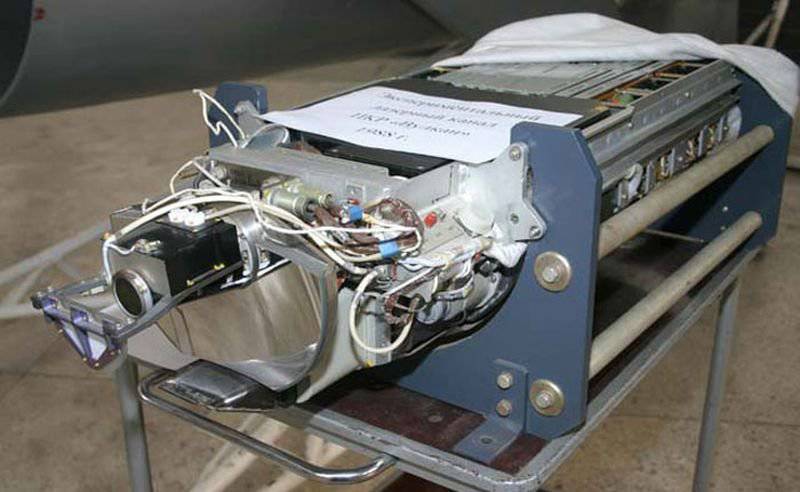
The test launches of missiles with a homing head of a laser channel, as part of the creation of the Vulcan LK missiles, were supposed to take place approximately in the 1989 year. The onboard equipment of the laser guidance channel was located in the air intake channel. The prototype of the rocket successfully passed ground bench tests. Launches were to be held at the same range near the village of Nenoks. It was planned to implement from 5-ti to 9-ti starts. However, the development of a new rocket and a new laser-guided system was discontinued roughly in 1988-89's. The known data of the guidance system - the beam had an approximate diameter of 10 meters; the detection and recognition range was approximately 15 kilometers.
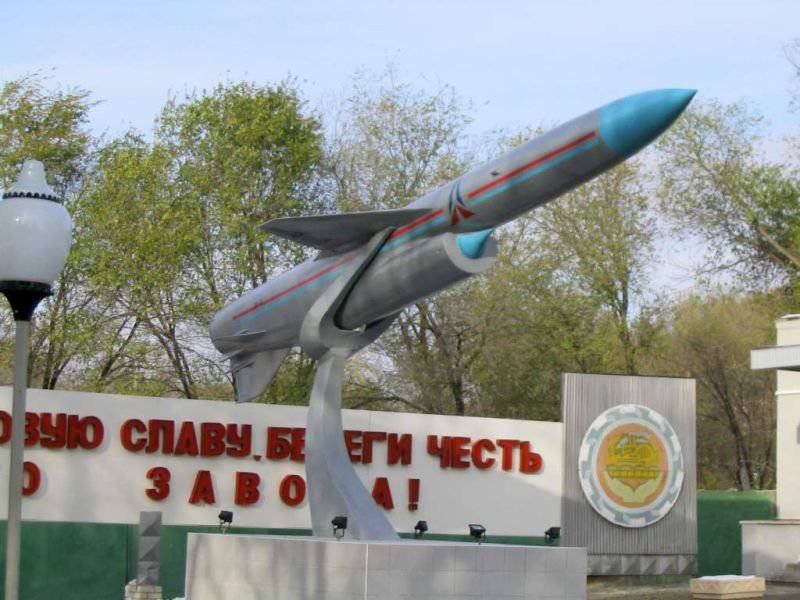
Nuclear missile tests
In the course of work on the creation of rockets for the Vulkan SCRK, a research work called “Radiation” was carried out, whose task was to analyze the impact of the damaging factors of nuclear weapons on the missiles going to the target. For this analysis on Novaya Zemlya, a nuclear charge was detonated in a special chamber. The analysis revealed the defeat of most elements of the onboard equipment by neutron radiation at a distance of 500 meters from the epicenter of the explosion, while some of the details were irreversibly damaged. As a result of the analysis, some parts of the onboard equipment were replaced by more resistant to the damaging factors of nuclear weapons.
Key Features:
- length 11.7 meter;
- diameter - 0.9 meter;
- wing - 2.6 meter;
- weight with / without starting engine - tons 9.3 / 5;
- range of destruction to 700 kilometers;
- flight speed min / max altitude - Mach 2 / 2.5;
- minimum flight altitude - 15 meters;
- The operating time of the solid-fuel accelerator is 12 seconds;
- main engine - TRD KR-17В;
- used combat units: combined warhead (cumulative and high explosive), weighing 500 kilogram, pierces armor up to 400 mm. To destroy a single aircraft carrier, three missile hits are required; nuclear warhead, power 350 kt.
Known carriers:
- four SSGN project 675MKV. 8-mi missiles per SSGN. All submarines for the 1994 year removed from service;
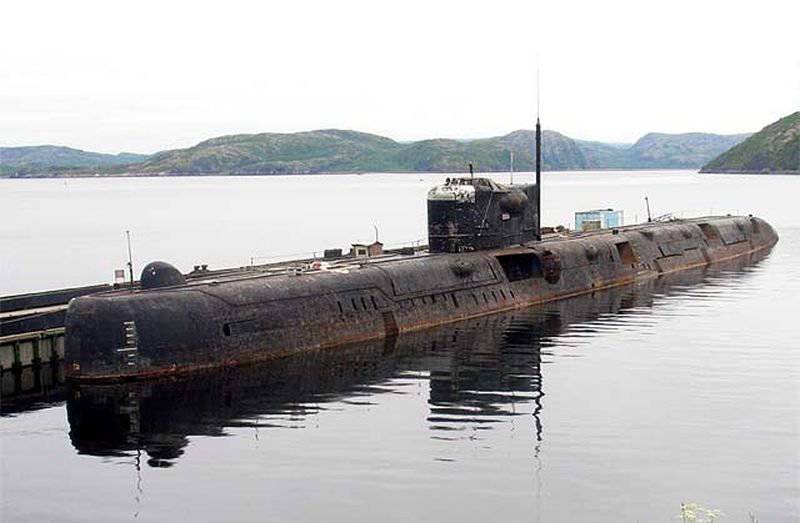
Three RRC project 1164 "Unant". 16 missiles in 8-paired PU for one missile cruiser;
- GRC Varyag (Chervona Ukraine) was put into operation on 16.11.1989, with the Vulkan complex on board;
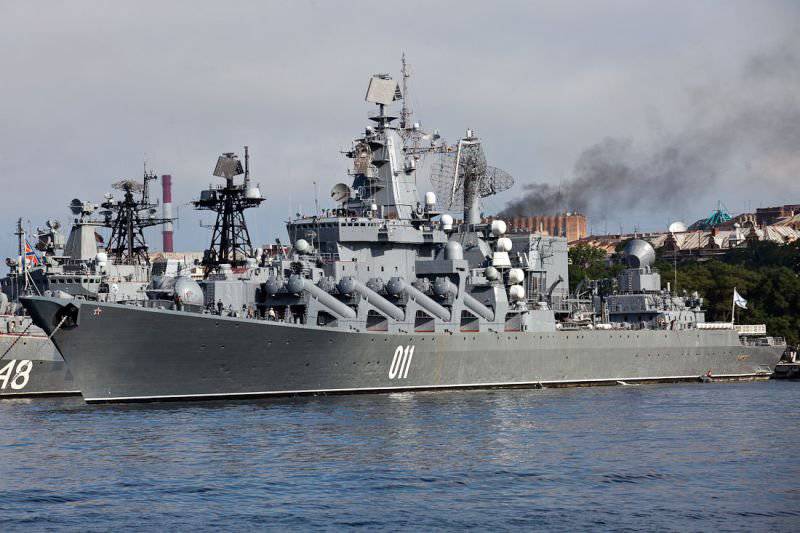
- GRKR "Moscow" in the course of modernization receives the SCRC "Vulkan" instead of the complex "Basalt";
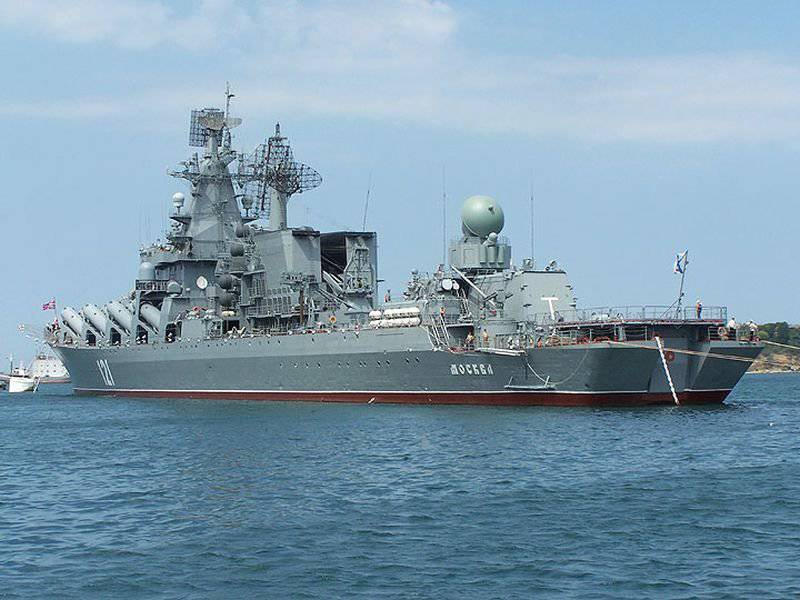
- RK "Ukraine" (Admiral Lobov) has on board the PU complex "Vulkan". At the moment he is "part of" the Ukrainian Navy. During the existence of the state of Ukraine, it was never completed. The crew of the cruiser was formed and dissolved three times. Located on the pier of the Nikolaev shipbuilding plant. 1 costs Ukraine a million dollars “idle” annually. Recently, talks about a possible sale of the Russian Federation have intensified.
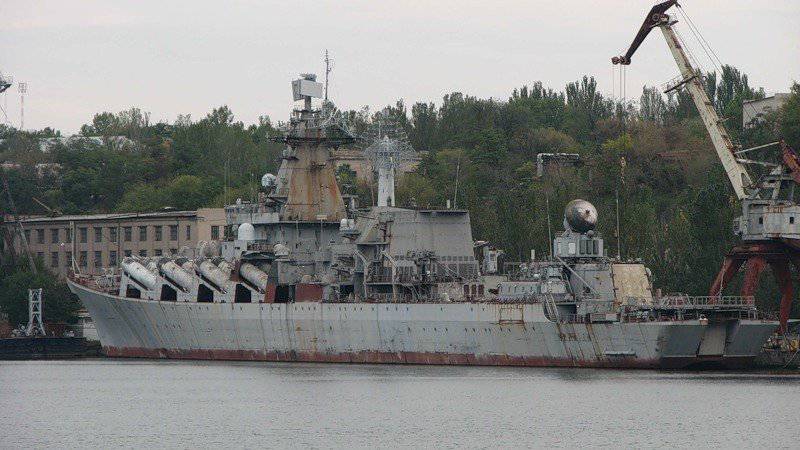
Information sources:
http://www.arms-expo.ru/049055051054124049050052054.html
http://military.tomsk.ru/blog/topic-390.html
http://ru.wikipedia.org/wiki/%D0%9F-1000_%D0%92%D1%83%D0%BB%D0%BA%D0%B0%D0%BD
http://www.liveinternet.ru/journalshowcomments.php?jpostid=118753049&journalid=1106169&go=next&categ=0
Information